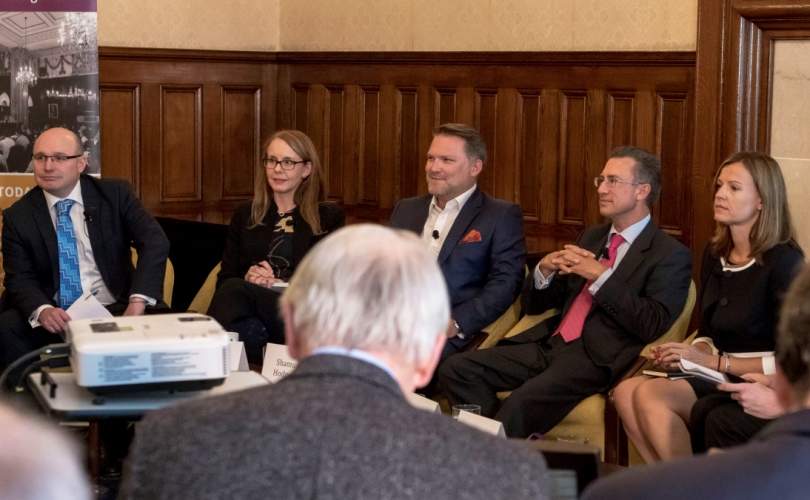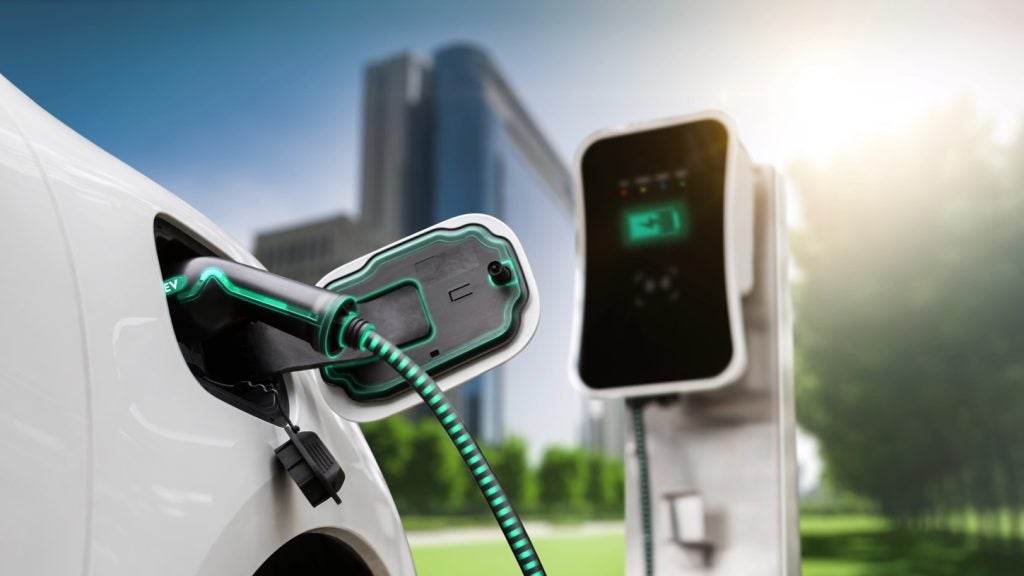
With heightened regulatory scrutiny, a number of industry experts used the latest Digital Banking Club debate to discuss whether moving more motor finance sales online could deliver a more compliant customer outcome. Motor Finance reports
Among the criticisms made by some of the press in 2017, one particular point is hard to dispute: that some customers have been put on a PCP deal with a mileage allowance below what it should have been.
One of the standard reasons given for this is that the dealer that sold the car was more interested in lowering the monthly payments and getting the customer in the car than in selling the most suitable product.
Regardless of how frequently this situation arises, the difficulty in disproving it highlights one of the challenges in selling car finance compliantly.
The traditional elongated distribution chain of PCP means that finance is usually introduced by a dealer outside of the finance house’s direct control.
Speaking at the second Digital Banking Club (DBC) for Vehicle Finance Debate, powered by Intelligent Environments, at the Law Society, London, several industry experts explained that, regardless of channel, one of the keys to selling a car on finance compliantly is making sure the customer is fully informed.
How well do you really know your competitors?
Access the most comprehensive Company Profiles on the market, powered by GlobalData. Save hours of research. Gain competitive edge.

Thank you!
Your download email will arrive shortly
Not ready to buy yet? Download a free sample
We are confident about the unique quality of our Company Profiles. However, we want you to make the most beneficial decision for your business, so we offer a free sample that you can download by submitting the below form
By GlobalDataMaria Rogers, head of digital at Peugeot, Citroen & DS Automobiles UK, project-managed the design of Peugeot’s online webstore, and began the day saying this was one of the key priorities in designing the store.
For Rogers, a compliant customer outcome involved making sure that the customer was presented with all the information regarding their potential choices, but not in a way that would drown them with too much information.
“Treating customers fairly was paramount in designing the site,” she added.
Chris Rowthorn, head of operation at MotoNovo Finance, agreed with Rogers, but added: “I do not think it is just about a compliant customer outcome, but what a good customer outcome looks like.”
Shamus Hodgson, managing director of subprime lender Moneybarn, pointed out that, due to the diversity of lenders and customers in the industry, companies need to apply an element of proportionality to what a compliant, good customer journey and outcome looks like.
For example, he said: “Our customers generally need more hand-holding than prime customers and new car customers. So there will inevitably be a larger degree of human interaction than there might be in the new space.”
Fitness for purpose
Fitness for purpose is another area which needs to be considered when thinking about a compliant customer journey. Jo Davis, partner at Locke Lorde, described fitness for purpose as “fundamental”, adding: “If I am selecting a car, it has to fit my needs. What is my usage? Am I going to be doing X mileage on it? The starting point is the compliance of that.”
Alongside this, transparency was one of the key elements Davis mentioned. For David Webber, chief executive officer at Whistlebrook, there are a number of elements in the finance side of the car-buying journey which are often not transparent today.
He said: “It is not always transparent, when a customer goes into a dealership and gets financed in that dealership, where the organisation they are buying from ends and the organisation financing the vehicle begins, and who they are dealing with. It is not completely transparent to the customer as to the incentives the person selling the car to them is getting, exactly how the product is going to match what they can afford or what they need.”
This latter point goes back to arguments around ensuring that physical dealers are selling finance compliantly. Webber added: “I would argue quite often they [dealers] seem very keen to help me make the monthly payment as little as possible, without necessarily too much regard as to how much mileage I will do.”
There are ways to combat this type of behaviour. Rowthorn, for example, points out that MotoNovo has inserted an extra step into the sales process where it asks the customers about mileage during a phone call, as well as taking the dealer’s submission.
Hodgson also pointed out that, although there are a variety of dealerships resulting in a variety of experiences for customers, the industry has made huge efforts to move away from just having a salesman trying to shift volume. “There is still room to go, but I would not characterise the whole industry as one where you step into a showroom and you do not get an attempt at transparency,” he added.
Davis also said she has seen a lot of progress in this direction, in her capacity as a partner in a law firm. She says: “I have done some reviews in dealerships, and seen some amazing changes in the processes they have made. With some of them I have been extremely impressed.”
One area where dealers have evolved, and continue to evolve, is around evidencing. If a finance agreement turns sour years into an agreement, it is important that dealers are able to show that they explained all the details to a consumer and that the customer left with the most appropriate vehicle and finance agreement. Davis noted: “Creditworthiness and affordability alone are huge responsibilities. Evidencing them is really important.
“You only need to see the way the Financial Ombudsman Service is managing claims related to these: If you cannot show the product was affordable alone, the penalties are huge – a complete unwind, and you pay the customer back. You have to think similarly with product suitability.”
This is one of the areas where a digital sales process has an advantage over a physical dealer. Online sales processes are, by their nature, more regimented, and evidencing can be standardised. Thanks to cookies and analytics, companies can trace customer journeys, look at where customers might be struggling, and improve the information given and how it is presented.
While a digital storefront will help with this, it is clear that having just a digital storefront is not something at which lenders are looking. Hodgson, for example, pointed out that Moneybarn does substantial amounts of business through internet brokers such as Zuto. However, he added: “The decision as to whether this is a people-based or digital approach is not a binary choice. For me it is a blend of human and digital, particularly in our space.”
When customers are brought to Moneybarn after rejection from prime lenders, Hodgson said a human touch remains vital: “When you are dealing with subprime customers, often they have gone through a journey where they have been declined by a prime application. There is a sense of disappointment and a lack of understanding at this stage, and this is quite difficult to handle with just a digital platform.”
Rowthorn added that this is another area where the industry has some room to develop. He said: “We are going to see an increasing prevalence of pre-approval and decision in principle, and potentially better signposting of customers who are declined to the likes of a credit expert or a clear score product that enables them to understand why, and manage their finance better.
For Rogers, the need for both human and digital solutions remains key: “Even on our digital platform, we still have a lot of people to support customers either through live chat or phone call or email. We have a lot of people build deals online, then take those deals to the dealership to make sure it is the right car and deal and to get dealer assistance. So our digital platform is our shop window.”
The evolving dealership
With both dealership and online offerings looking to evolve to complement one another in the future, and to keep up with what the Financial Conduct Authority deems a good customer outcome, the role of the dealer may also change.
According to Rowthorn, this is already beginning to happen. He pointed to the likes of Rockar, which is effectively a physical car retailer but with an emphasis on online. “We will see an increasing prevalence of pop-up shops with one or two cars in stock, and it is really about the digital.”
According to Rogers, dealers are aware that in some cases their role is going to change. When designing Order Online, she said feedback from dealers showed they understood consumers are visiting showrooms less.
She explained: “We know that on average it required three visits for a customer to purchase a car; now it is just over one. We can see on the website that people are repeatedly returning because they are considering and talking to people. They spend on average over 11 hours online before walking into a showroom.”
The used car industry is a different situation. Cars are not built to order, and to the same standard as one another. Hodgson said: “I could see a situation where more and more people are happy to look at a used car online, and land that purchase online, but I think the proportion of people happy to do that will be much less than in the new car space.”
Webber added: “It is going to be interesting to see how new and used evolve. They may evolve in parallel but diverging models.”






